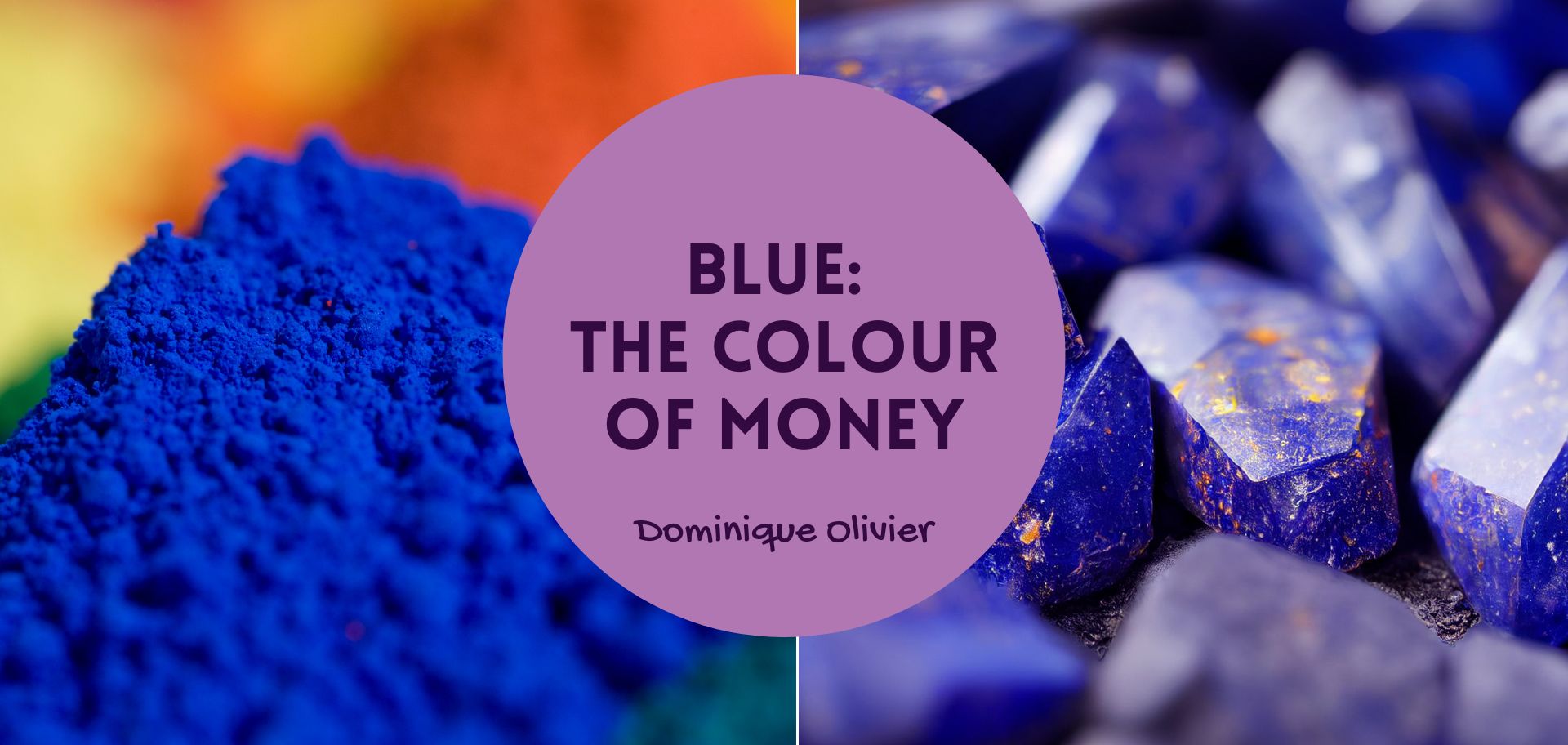Fears around a cocoa shortage in West Africa recently sent chocolate prices around the globe skyrocketing. While favourable weather at the last minute has since helped to stabilise the situation, I can’t help but reflect on scarcity and its relationship to the cost of blue paint.
Cocoa prices hit an all-time high in March, breaking the $10,000 per ton mark due to disease outbreaks and destructive weather in West Africa. By the end of the first quarter, cocoa futures in New York reached $10,080, doubling in price this year because of fears about a shortage of cocoa beans. Chocolate lovers the world over are quaking in their boots as I write, but fortunately this tale has turned happy again, as the weather in Ghana has improved. Happy for chocolate consumers, that is. Not so much for those who fancied a punt. Cocoa futures have been falling since the clouds gathered, bringing on the longest run of losses since 2022
Ghana, Côte d’Ivoire, Nigeria, and Cameroon produce over 75% of the world’s cocoa but have faced severely reduced crop yields due to droughts, fires, and other climate change-related issues. According to Gro Intelligence, the current drought in West Africa is the worst since at least 2003. Now, if we were able to cultivate cocoa beans en masse on every continent in the world, we’d certainly see less volatility in cocoa prices. But when disaster strikes the very region that produces the majority of the world’s supply of something, it triggers a global shortage.
And when supply is low, prices go high. We’ve seen this movie before.
The colours of life
These days, if you want to paint your kitchen, all you have to do is walk into your nearest hardware store and select the colour of your choice (as long as that colour isn’t Vantablack). The pigments in the paint you buy are almost guaranteed to be the synthetic variety, created in factories according to scientific formulas that read like recipes. As you can imagine, this is a far cry from how things worked when human beings first started painting things.
In the beginning, we created all of our pigments from things we found around us in nature. Reds, yellows and browns were the easiest and therefore the first, derived from the clays and soils under our feet. Minerals like copper malachite gave us green, burnt wood and ivory gave us black, and lime, calcite and later toxic lead produced white.
It was a simple formula but it worked relatively well: if a piece of burnt twig appeared black, it would leave a black mark when applied. This strategy worked well for almost every colour except the most elusive – blue.
The problem with blue is that we could see it around us in nature but we couldn’t hold it or apply it. The sky is blue, and so is water, but neither atmosphere nor water produce a blue pigment. To capture this evasive colour, we shifted our strategy from foraging to scientific experimentation.
A blue worth more than gold
The world’s first synthetic pigment, Egyptian Blue, was created more than 5,000 years ago. While evidence of its use has survived the ravages of time in the form of paintings on tomb walls, the original recipe for Egyptian blue was lost centuries ago. Fortunately, modern chemists were able to recreate the process and uncover how the Egyptians managed to capture the sky by combining limestone, sand and copper malachite over heat.
Yet Egyptian blue was just a precursor to the world’s most coveted blue, which would soon follow.
Derived from the lapis lazuli stone, the ultramarine pigment was once considered beyond precious. Even its name alluded to its exotic origins, translating directly to “beyond the sea”. For centuries, the only source of this vibrant blue was lapis lazuli mined from a remote, arid strip of mountains in northern Afghanistan.
While the stone itself wasn’t considered rare, the method for extracting the pigment from it was a meticulous and laborious process. First, the stone was ground by hand into a fine powder, then mixed with melted wax, oils, and pine resin. This mixture was then kneaded in a diluted lye solution to produce the rich, deep blue hue. All of this effort, combined with the logistic feat of transporting the mined stones from Afghanistan to Europe (remember, these were the days before Amazon’s delivery drones), resulted in a premium price tag for Renaissance painters. It is estimated that the cost of ultramarine pigment was roughly ten times that of the stone it derived from, and in times of high demand, more than gold.
Due to its exorbitant cost, ultramarine was typically reserved for depicting the clothing of Christ or the Virgin Mary in religious artwork, or for painting royal portraits (ever wondered where the term “royal blue” came from?). Most European painters relied on their wealthy patrons to underwrite the purchase of this luxury pigment. For the patrons, a painting that contained even a glaze of ultramarine blue was a testament to their wealth and success, which is why those who could afford it insisted on its use.
Some artists, like Vermeer, had no problem miring their entire family in generational debt as they took out loans to be able to afford the coveted blue. In one of his most famous paintings, “Girl with the Pearl Earring”, the blue headband around the girl’s head looks like it was painted in ultramarine, but was actually created by applying a thin glaze of ultramarine over a white underpainting. This allowed Vermeer to bring the blue into his painting in the thriftiest way possible, by diluting the smallest scrape of the true pigment into a carrier oil to create the glaze.
Others, like Michelangelo, had to leave paintings unfinished when they ran out of ultramarine. His painting, “The Entombment”, features a distinct unfinished corner where a weeping Virgin Mary is meant to be found, wearing her cloak of blue. Refusing to substitute any other shade of blue for the Holy Virgin’s cloak, Michelangelo opted instead to abandon the painting entirely.
Not all artists were this committed, however. Those who saw a gap to profit from dishonesty would claim to use ultramarine but substitute it with cheaper pigments like smalt or indigo, keeping the profit difference for themselves. Such deceit was a risky business, as getting caught could irreparably damage an artist’s reputation, but the price difference between indigo and ultramarine was more than significant enough to justify the gamble.
The race to substitute
In 1824, the Société d’Encouragement, a French scientific society, posed an intriguing challenge: to create a synthetic alternative to ultramarine. The reward? The sum of six thousand francs – a considerable incentive for any chemist or researcher.
Prompted by this enticing offer, two contenders stepped forward, each vying for the prize. First was Jean-Baptiste Guimet, a French chemist with a keen interest in colour chemistry. The second was Christian Gmelin, a German professor hailing from the University of Tübingen.
Their approaches diverged, yet their timing was eerily synchronised. Within mere weeks of each other, both Guimet and Gmelin presented their artificial solutions. Gmelin, ever the cautious scientist, asserted that he had cracked the code a year earlier but had deliberately withheld publication. Guimet, not to be outdone, countered by claiming that he had conceived his formula two years prior but had similarly refrained from publicising it.
The scientific community buzzed with anticipation as the committee deliberated. Ultimately, the decision fell in favour of Guimet. His synthetic blue pigment triumphed, earning him the coveted reward. However, this outcome did not sit well with the German gentry, who had rooted for Gmelin. Consequently, the artificial blue became immortalised as “French ultramarine”.
From king’s cloth to overalls
Like most artists these days, I only use synthetic pigments in my paintings. Yet I often pause to consider the fresh dab of ultramarine as I apply it to my palette. Thanks to the wonder of science, my tube of ultramarine paint costs exactly the same as any other shade of blue. What would Vermeer, Michelangelo or any of their contemporaries think if they saw me apply this precious colour as freely as any other on my palette?
Where there is no longer scarcity, there is no need to differentiate ultramarine from its fellow pigments by price. As such, the pigment has long lost its association with wealth. If I were to select an ultramarine jersey from a shop shelf today, it would be because the colour appeals to me, not because I am trying to communicate that my family is royally wealthy.
As a student of art history, I cannot help but smile at the irony that perhaps the most common use of ultramarine in clothing these days is in the blue overalls worn by manual labourers. From royal blue to blue collar, ultramarine has trickled its way down from the robes of kings to the vestments of the working class. And often, these workers are busy extracting something that we believe to be rare today.
As the colour blue has shown us, rarity can change. Lab-grown diamonds, anyone?
About the author: Dominique Olivier

Dominique Olivier is the founder of human.writer, where she uses her love of storytelling and ideation to help brands solve problems.
She is a weekly columnist in Ghost Mail and collaborates with The Finance Ghost on Ghost Mail Weekender, a Sunday publication designed to help you be more interesting.
Dominique can be reached on LinkedIn here.





Love your stories .. great research.
The colour blue is a fascinating topic!
You also have International Klein Blue, an intense version of ultramarine introduced by Yves Klein, who showed that it was possible to make art using only a single colour.
A more recent scientific quest for the colour blue involved light-emitting diodes (LEDs). The first commercially available LEDs of the 1960’s were red, which made for funky indicator lights and wrist-watch displays but not much else. Yellow and green LEDs followed shortly after but the blue LED remained elusive, as it requires some tricky materials. Finally, in the 1990’s, Japanese researchers perfected their crystal-growing techniques to build commercially viable blue LEDs. They grew layers of semiconductor crystals on a tiny sliver of sapphire, which I find quite fitting.
This ushered in a new era of lighting and display devices, as you could finally produce white light (the most useful kind!). Think of all the LED bulbs in your home, as well as LED TVs, cell phone displays, etc. etc. To crown it all, researchers Nakamura, Amano and Akasaki were awarded the Nobel Prize in Physics ten years ago for their breakthrough.
Always blue! 🙂
The colour blue is a special colour in many respects. It is universally preferable and all the symbolism points to a perfect state of affairs. It certainly occupies a loft position in the colour spectrum. The same can not be said of two diametrically opposite colours: black and white. It is a great pity that, humans the most intelligent of all creatures on earth, chose consciously, to depict themselves in these two colours.
Most important, it is the colour of Pretoria’s rugby team, whom we worship as royalty when they win
Lexus has managed to create a blue colour for their cars that is actually not a colour but microscopic reflectors that produce a “blue”. They claim that is how blue butterflies produce their bleu appearance.